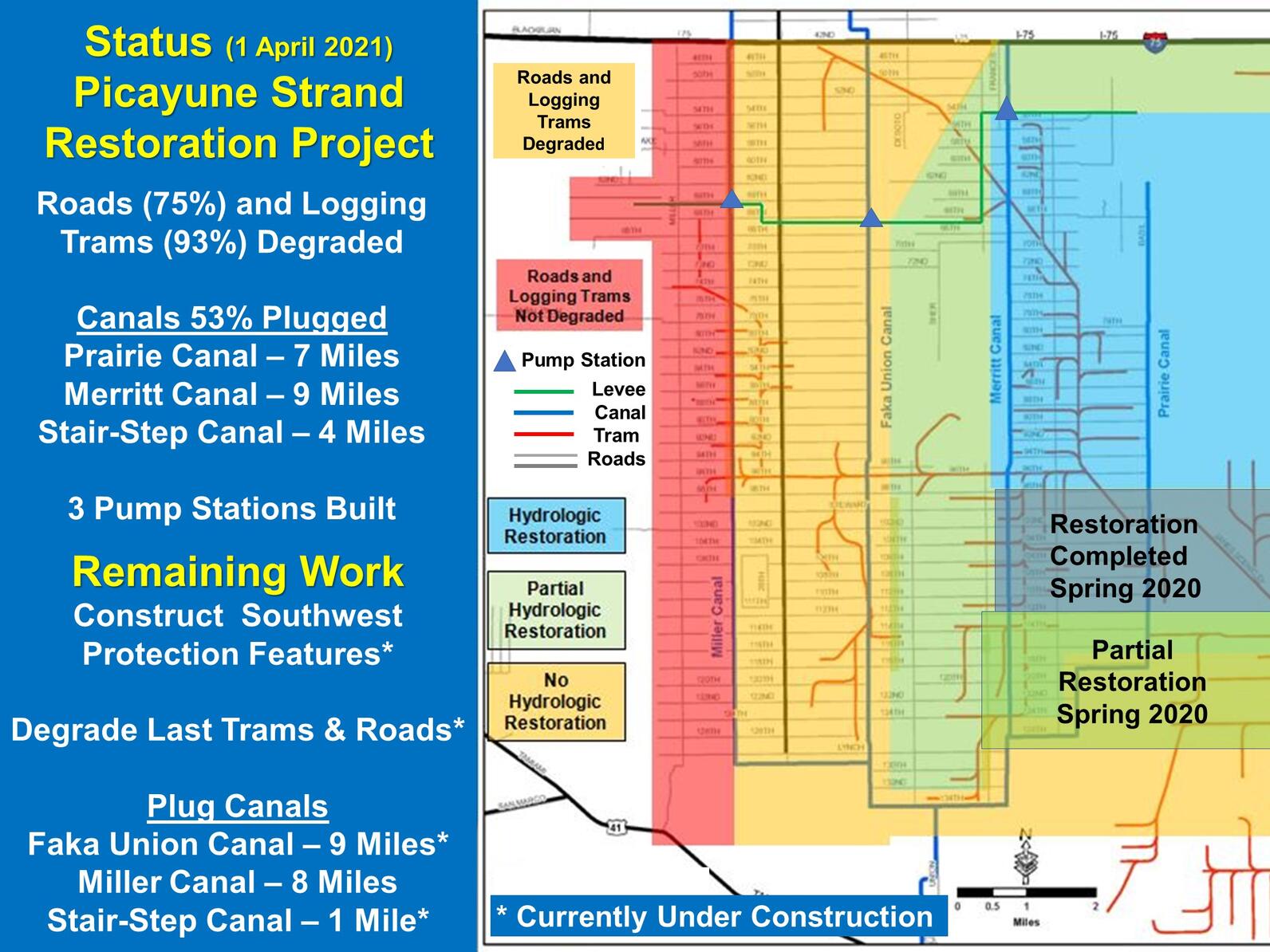Almost a year ago, the South Florida Water Management District engaged a large team of stakeholders and consultants to study ways to improve water quality moving south through the western Everglades. Strategies aim to prevent nutrient-laden water coming off farms, roads, and urban development from being washed by newly restored water flows from the Picayune Strand Restoration Project into Rookery Bay, Collier Seminole State Park, and the Ten Thousand Islands National Wildlife Refuge.
The study identified the best technologies, locations, and funding options to reduce this pollution from harming these coastal “Outstanding Florida Waters” or “OFWs.” The timing of these results is important, as the Picayune Strand Restoration Project will be completed by 2024 or 2025 and waters will be flowing across this restored region. Unfortunately, the study could not find enough land and projects to fully clean up all the expected pollution.
Audubon and our allies strongly advocate a parallel effort to work with the farmers, Collier County, and other landowners to reduce the nutrients at their sources, which would allow the downstream projects to be more effective and economical on less land. This is a pollution challenge that exists in many other parts of the Greater Everglades and has stymied agencies and farmers in reduction of algae blooms and cattails. The study recommended source control efforts be undertaken; a step that has yet to be initiated. That is expected to be a primary next step in assuring clean restoration waters for these vital estuaries.




